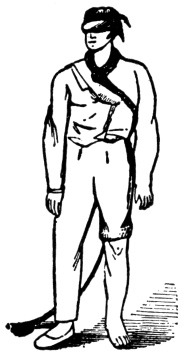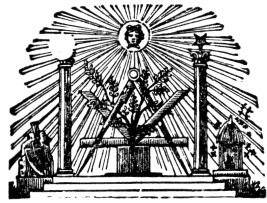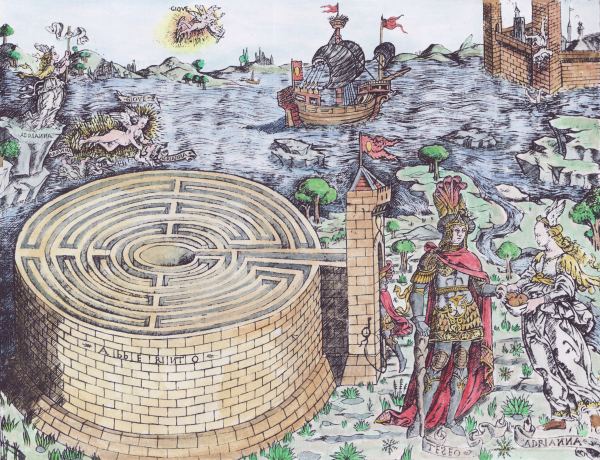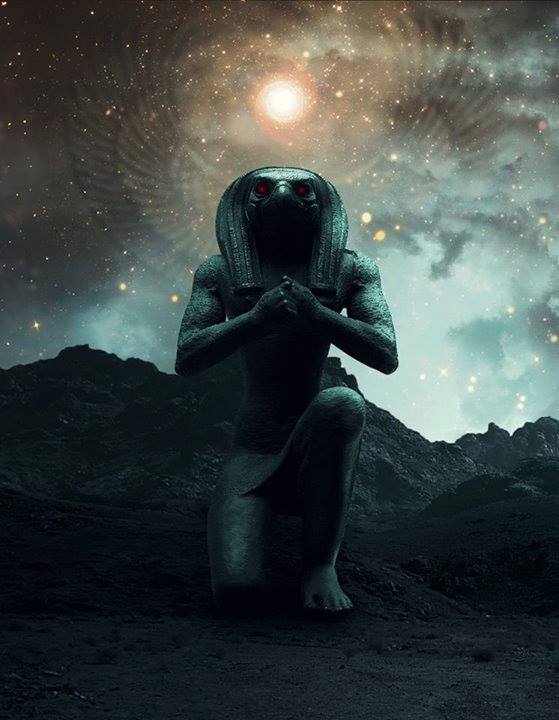At the paint where the Grand Gallery ends and the horizontal passage towards the Queen’s Chamber begins is the entrance to the well and also the opening leading down the first ascending passage (D) to the point where this passage meets the descending passage (A) leading from the outer wall of the Pyramid down to the subterranean chamber. After descending 59 feet down the well (P), the grotto is reached. Continuing through the floor of the grotto the well leads downward 133 feet to the descending entrance passage (A), which it meets a short distance before this passage becomes horizontal and leads into the subterranean chamber.
The subterranean chamber (O) is about 46 feet long and 27 feet wide, but is extremely low, the ceiling varying in height from a little over 3 feet to about 13 feet from the rough and apparently unfinished floor. From the south side of the subterranean chamber a low tunnel runs about 50 feet and then meets a blank wall. These constitute the only known openings in the Pyramid, with the exception of a few niches, exploration holes, blind passages, and the rambling cavernous tunnel (B) hewn out by the Moslems under the leadership of the Prophet’s descendant, Caliph al Mamoun.
____________________ the Pyramids are built will yet be found, I feel convinced, ample information as to their uses. A good diamond drill with two or three hundred feet of rods is what is wanted to test this, and the solidarity of the Pyramids at the same time.” (See The Solution of the Pyramid Problem.)
Mr. Ballard’s theory of extensive underground apartments and quarries brings up an important problem in architectonics. The Pyramid builders were too farsighted to endanger the permanence of the Great Pyramid by placing over five million tons of limestone and granite on any but a solid foundation. It is therefore reasonably certain that such chambers or passageways as may exist beneath the building are relatively insignificant, like those within the body of the structure, which occupy less than one sixteen-hundredth of the cubic contents of the Pyramid.
The Sphinx was undoubtedly erected for symbolical purposes at the instigation of the priestcraft. The theories that the uræus upon its forehead was originally the finger of an immense sundial and that both the Pyramid and the Sphinx were used to measure time, the seasons, and the precession of the equinoxes are ingenious but not wholly convincing. If this great creature was erected to obliterate the ancient passageway leading into the subterranean temple of the Pyramid, its symbolism would be most appropriate. In comparison with the overwhelming size and dignity of the Great Pyramid, the Sphinx is almost insignificant. Its battered face, upon which may still be seen vestiges of the red paint with which the figure was originally covered, is disfigured beyond recognition. Its nose was broken off by a fanatical Mohammedan, lest the followers of the Prophet be led into idolatry. The very nature of its construction and the present repairs necessary to prevent the head from falling off indicate that it could not have survived the great periods of time which have elapsed since the erection of the Pyramid.
To the Egyptians, the Sphinx was the symbol of strength and intelligence. It was portrayed as androgynous to signify that they recognized the initiates and gods as partaking of both the positive and negative creative powers. Gerald Massey writes: “This is the secret of the Sphinx. The orthodox sphinx of Egypt is masculine in front and feminine behind. So is the image of Sut-Typhon, a type of horn and tail, male in front and female behind. The Pharaohs, who wore the tail of the Lioness or Cow behind them, were male in front and female behind. Like the Gods they included the dual totality of Being in one person, born of the Mother, but of both sexes as the Child.” (See The Natural Genesis.)
Most investigators have ridiculed the Sphinx and, without even deigning to investigate the great colossus, have turned their attention to the more overwhelming mystery of the Pyramid.
THE PYRAMID MYSTERIES
The word pyramid is popularly supposed to be derived from πῦρ, fire, thus signifying that it is the symbolic representation of the One Divine Flame, the life of every creature. John Taylor believes the word pyramid to mean a “measure of wheat, ” while C. Piazzi Smyth favors the Coptic meaning, “a division into ten.” The initiates of

Moe is the founder of GnosticWarrior.com. He is a father, husband, author, martial arts black belt, and an expert in Gnosticism, the occult, and esotericism.








